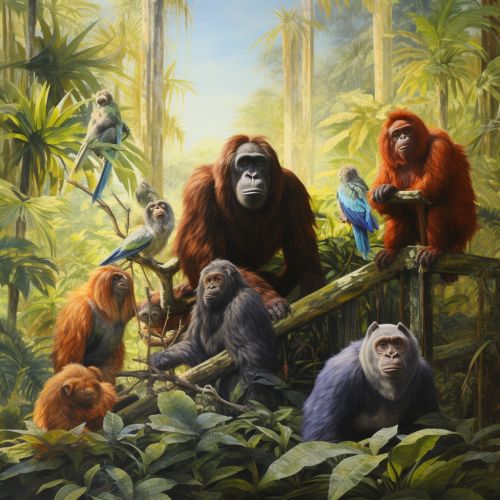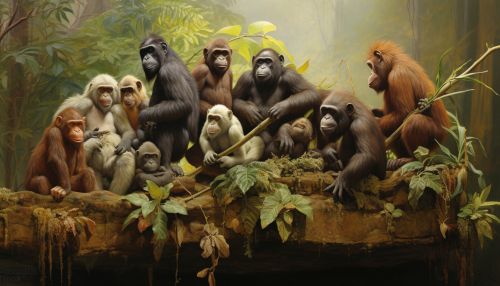Sexual selection in primates
Introduction
Sexual selection in primates is a complex process that involves a variety of mechanisms, including mate choice, competition for mates, and sexual dimorphism. This process is driven by the reproductive success of individuals, which can be influenced by a number of factors such as physical attractiveness, social status, and genetic compatibility.


Mechanisms of Sexual Selection
Sexual selection in primates operates through two main mechanisms: intersexual selection and intrasexual selection. Intersexual selection, also known as mate choice, involves the preferences of one sex for certain traits in the opposite sex. Intrasexual selection, on the other hand, is competition among individuals of the same sex for access to mates.
Intersexual Selection
Intersexual selection in primates is often driven by female choice, as females typically invest more in offspring than males do. This can result in males developing traits that are attractive to females, such as bright coloration, large body size, or elaborate courtship behaviors. For example, in Mandrills, males have brightly colored faces and buttocks, which are thought to be attractive to females.
Intrasexual Selection
Intrasexual selection in primates often involves physical competition between males for access to females. This can result in the evolution of traits that enhance a male's ability to compete, such as large body size, strength, or aggressive behavior. For example, in Gorillas, males are much larger than females and engage in physical fights for control of harems.
Sexual Dimorphism
Sexual dimorphism, or the physical difference between males and females of the same species, is a common result of sexual selection in primates. This can manifest in a variety of ways, including differences in body size, coloration, or secondary sexual characteristics.
Body Size
In many primate species, males are significantly larger than females, a phenomenon known as sexual size dimorphism. This is thought to be a result of intrasexual selection, as larger males are often more successful in physical competition for mates. For example, in Orangutans, males can be up to twice the size of females.
Coloration
Differences in coloration between males and females, known as sexual dichromatism, can also be a result of sexual selection. This is often a result of intersexual selection, as brightly colored males can be more attractive to females. For example, in Blue Monkeys, males have a bright blue coat, while females are a duller gray color.
Secondary Sexual Characteristics
Secondary sexual characteristics, such as the large canines of male Baboons or the bright facial coloration of male Mandrills, can also be a result of sexual selection. These traits are not directly involved in reproduction, but can play a role in mate choice or competition.
Genetic Aspects of Sexual Selection
Sexual selection can also have a significant impact on the genetic diversity of a population. This is because individuals with certain traits may have a higher reproductive success, leading to an increase in the frequency of those traits in the population.
Sexual Selection and Genetic Diversity
Sexual selection can lead to an increase in genetic diversity, as individuals with different traits are selected for reproduction. This can result in a population with a wide range of traits, which can be beneficial for the survival of the species.
Sexual Selection and Genetic Drift
Sexual selection can also lead to genetic drift, or changes in the frequency of certain genes in a population due to random chance. This can occur when certain traits become more common not because they are beneficial, but simply because they are associated with reproductive success.
Implications of Sexual Selection
The process of sexual selection in primates has significant implications for our understanding of primate behavior, evolution, and conservation.
Behavioral Implications
Understanding sexual selection can help us understand primate behavior, as many behaviors are influenced by the need to attract mates or compete for resources. For example, the aggressive behavior of male Gorillas can be understood as a result of intrasexual selection.
Evolutionary Implications
Sexual selection can drive the evolution of new traits and behaviors, contributing to the diversity and complexity of primate species. For example, the bright coloration of male Mandrills is thought to have evolved as a result of female choice.
Conservation Implications
Understanding sexual selection can also have implications for primate conservation, as it can influence population dynamics and genetic diversity. For example, if a certain trait is associated with reproductive success, individuals without that trait may be less likely to reproduce, potentially leading to a decrease in genetic diversity.
